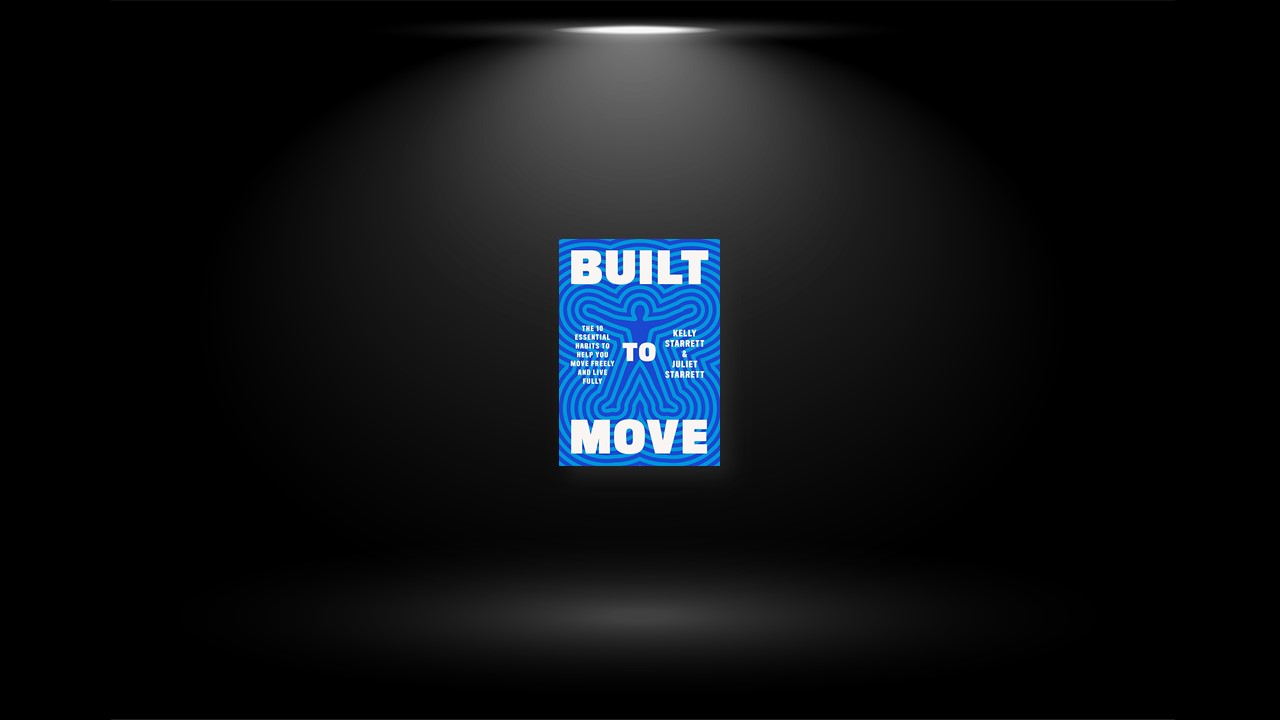Breathe Easy
What does it mean to breathe “well”? As the author defines it, breathing well boils down to three fundamentals:
Breathing spaciously, meaning that your belly, ribs, and chest expand generously as you inhale. These body parts are built to move as you breathe, not just to maximize oxygen intake, but also to allow you to take in enough air to help pump out waste-carrying fluid from your trunk and to create a sort of pressurized chamber that provides stability for your spine. (That’s one reason breathing well can help you avoid back pain.)
Breathing is initiated by the diaphragm, a curved muscle that separates the chest from the abdomen, which massages the nearby organs as it moves, helping with digestive function. Fully engaging that big muscle is called “diaphragmatic breathing” (and sometimes “belly breathing”), and that’s what you should be going for.
Breathing slowly and breathing through your nose rather than your mouth, even, whenever possible, during times of exertion. Going back again to how nature designed us, the nose is built to be our primary breathing portal for reasons that range from its germ-filtering abilities to its power, as the initiator of the inhale, to funnel more oxygen to our cells.
Mouth breathing is your backup ventilation system. It’s for those times when you’re running from a bear or escaping a fire or when you have a cold and your nose is clogged—not for when you’re simply sitting in a chair or sleeping. Nose breathing is not only normal, but it also helps you sleep better, get up the stairs without panting, exercise harder and longer, and even have better teeth.
PHYSICAL PRACTICE: Morning Spin-Up
This is a great way to start your morning. Take the time before the day becomes chaotic to sit quietly and just breathe. We’re treating this breath practice like a skill session. You may find that your breathing musculature gets tired after a minute or so. This is normal! It’s also okay to feel a little luminous or tingly. Remember: You are just breathing here! If the feeling gets too uncomfortable, take a one-minute break and start back up again. The ideal is to do three to five rounds of this breathing. There is a ton of interesting physiology to play with here. You’re using your breathing to improve the range of motion of your ventilation systems. Here’s what to do:
Set a timer for two minutes or have a timing device available. While sitting on a chair or, preferably, cross-legged on the floor, or even lying down, take a full breath in through your nose, expanding your chest, ribs, and belly. Treat each breath like it is going to be a record inhale! Relax and exhale fully, saying “huh” as you release the air (don’t blow). Don’t pause between your exhales and inhales. Repeat for two minutes. Now repeat the practice, only this time exhale fully then hold as long as possible without inhaling. When you feel the need to breathe, inhale and repeat for another two minutes. Alternate these sequences as many times as you desire. Do three to five rounds and you’ve just worked your way into a meditation practice.
Hip Mobilizations
Most of us use our bodies in asymmetrical ways. It’s unlikely that you will spend as much time in hip extension as you do in hip flexion, and no one—least of all us—expects you to. And you don’t need to. But sitting less and getting your hip into extension daily through some targeted moves will go a long way toward restoring its normal range of motion. There’s no magic to it; it’s just the simple process of using it so you don’t lose it.
The physical practice for greater hip extension involves actually putting your hips into extension (no surprise there), as well as doing some moves to work the stiffness out of the surrounding tissues.
PHYSICAL PRACTICE: Kneeling Isometric
Kneel on the floor with your right leg at a 90-degree angle and your left knee on the floor behind your butt, torso upright, hands on your right knee. Squeeze the right side of your butt and move your right knee forward as far as you can—it won’t go very far with your butt squeezed—and hold the position. Keep your butt tight as you breathe—five slow inhales in, five slow exhales out—for one minute. Make sure you’re able to keep the working side of your butt engaged for the entire minute. Switch sides.
PHYSICAL PRACTICE: Standing Isometric
Separate your feet with your right foot forward and your left foot back. Bend your right knee slightly and come into a moderate lunge. You should feel tension in the front of your left thigh. Squeeze your butt (on the left side) and hold the position, keeping your butt tight as you breathe—five slow inhales in, five slow exhales out—for thirty seconds. Switch sides.
Walk This Way
Many people who are hitting the recommended three-to-five-times-weekly workouts, and even athletes who pile up the training hours, are shocked to learn we consider them basically inert. You might do your stair-climbing workout or CrossFit or Pilates and think, “Sweet! I’m crushing it.” But you may then go sit at your legal or computer programming job from 8 a.m. to 8 p.m., transition to dinner, and cap it off with a session of Netflix.
While it’s all well and good to knock it out of the park for thirty to sixty minutes a day, if you spend the rest of your waking hours toggling between a chair and sofa, you’re in some ways canceling out all the good your workouts are doing.
PHYSICAL PRACTICE: Intentional Walks and More-Steps Strategies
Walk while you talk. Use personal phone calls and even work meeting calls as opportunity to walk, whether it’s outside or just around your home or office space.
- Communicate in person. At work, walk to talk to a colleague before you call or click.
- Walk your dog! If you don’t have one, maybe this will inspire you to get one: A U.K. study found that dog-owners walk twenty-two minutes more per day than non-dog-owners. At the very least, borrow your neighbor’s dog—it’s the rare canine that won’t enjoy an extra outing.
- Walk your kid to school. If it’s safe, there is no better way to get steps in while also doing something healthy for your child.
- Take the stairs. Okay, you’ve heard this one before, but we’d be remiss if we didn’t remind you that taking the stairs is another way to get steps in without having to go for a formal walk. Every flight counts.
- Shop in person. During the pandemic, a lot of us got used to ordering groceries and just about everything else online. Wander the aisles in person, however, and you’re going to move way more than you would by letting your fingers do the walking on your keyboard.
- Park far from your destination or get off public transportation early. There’s no rule that says you have to be delivered to the doorstep of where you’re going; that’s just something most of us have gotten used to. Break the habit. You may not be able to walk the whole way to your destination, but it doesn’t mean you can’t get some steps in.
- Use wait time to walk. If you’re taking someone to the doctor or dentist, don’t just hang out in the waiting room. Take the time to walk. Likewise, if you’re at your kid’s volleyball tournament and there’s downtime (and there almost always is), walk around the venue a few times. If you have to wait for a table at a restaurant, give them your cell and tell them to call you when your table is ready (a lot of restaurants do this now anyway) while you walk around the block.
Future-Proof Your Neck and Shoulders
The shoulders and their adjacent body parts, the neck and the thoracic spine (also known as the “T-spine” or upper back), are not something people think about much—until they hurt or you realize you can’t do something you thought you could. Like throwing a ball for your dog, picking up a kid and placing them on your shoulders, swimming laps freestyle, putting away linens on a high shelf, lifting a suitcase into the overhead compartment, and, yes, raising your arms for the airport scanner. If you can’t perform these basic moves, it may also make it unlikely that you’ll be able to pick up new activities that require reaching or raising your arms.
Say you want to try swimming, weight training, or mastering a pull-up; it may be difficult. Say you want to paint your bedroom. Even painting on canvas, depending on how you do it, can be nearly impossible if you can’t get your arms up for long. Worst-case scenario (but not out of the realm of possibility) is that, as you grow older, even things like pulling a sweater over your head or washing your hair will cause you discomfort because your shoulders have such a limited range of motion. But give your shoulders the movement they need to stay supple, and you can do pull-ups or repaint the walls of your home to your heart’s content.
PHYSICAL PRACTICE: Wall Hang
This can also be done using a counter or in the downward dog position. Stand a few feet away from a wall. Bend at the waist and, with your back flat, place your palms flat on the wall. Keeping your head in between your arms, roll your shoulders outward (try to rotate your arms so that your elbow pits are pointing up at the sky) and “hang” on the wall. Hold for ten big breaths. Try to think about expanding your back and rib cage while you breathe.
PHYSICAL PRACTICE: T-Spine Mobilization
In this mobilization, you’ll be using the ball to mobilize the vertebrae and soft tissue in the upper back. It also lets your arms spend time in the ever-so-important overhead position.
Lie faceup on the floor, knees bent. Place a ball on the right side at the base of your neck, just at the top of the scapula. Raise your right arm overhead and, with the thumb pointed down, drop your hand down to the floor. Keep your elbow close to your head. Raise and lower your arm at a comfortable speed, breathing as you go, ten times. Now roll back a little so the ball is farther down your back, at about the middle of your scapula. Repeat the arm raising and lowering ten times. Finally, roll back again, moving the ball to the bottom of your scapula. Repeat the arm raising and lowering ten times. Switch sides. To create a more intense mobilization, do the exercise with your butt raised off the ground in a bridge position.
PHYSICAL PRACTICE: Rotator Cuff Mobilization
The effect this has on shoulder rotation is stunning. We suggest following up the exercise by retaking the Shoulder Rotation Test to see how dramatic the effects are. You don’t have to retake the test every time, but taking it after just doing the Rotator Cuff Mobilization your first time will show you that your efforts are not going to waste.
Lie faceup on the floor, knees bent. Place a ball under the point where your right shoulder meets your upper arm. Turn to the right side slightly so the ball sits snugly at the rotator cuff (but not under the arm). Extend your right arm out to the side, elbow bent at a 90-degree angle and your forearm perpendicular to the floor. In this position, inhale and exhale slowly as you contract, then relax the muscles sitting on the ball. Do this ten times. From there, alternate moving your forearm forward and back as far as it will go, keeping the elbow on the floor. Do this ten times. Switch sides.


